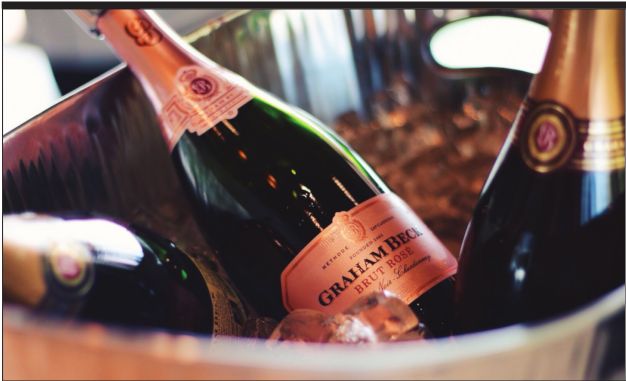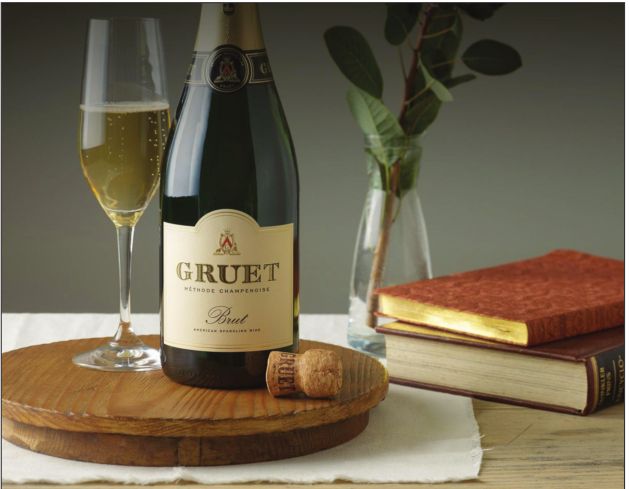
Valentine’s Day recommendations
Champagne is a classic choice for Valentine’s Day, and it, along with other sparkling wines like cava, prosecco and moscato d’Asti, are some of the most versatile wines to enjoy and pair with food. If I had to choose one “desert island wine” for the rest of my life, I would choose Champagne, or méthode Champenoise wines, without hesitation. Their acidity and minerality cut through rich, fatty dishes and add depth to flavors ranging from fruity to gamey. Often blended from several grape varieties, sparkling wine is an excellent choice when choosing wine for the table if everyone in the group is getting a different dish.
What defines Champagne, and how is it different from sparkling wine? Any variety of grape can be used to make sparkling wine, though tradition dictates specific varieties in certain parts of the world. Sparkling wines fall into four categories. The first is Champagne, which includes only wines produced in the province of Champagne, France, using the traditional method of secondary fermentation in the bottle. The second is any wine that is produced outside the Champagne region of France either by full or partial fermentation in tanks in order to develop the preferred carbonated characteristic. This method, known as Charmat, is utilized in the production of Asti Spumante wines. The third category is all wines that have been carbonated through simple carbon dioxide injection. A fourth category has evolved for wines from outside the province of Champagne that are produced by the traditional method using secondary fermentation in the bottle, which distinguishes these wines from sparkling wines produced in bulk. These traditionally produced sparkling wines are now marketed as “méthode Champenoise.”
True Champagnes are made entirely of chardonnay, Pinot Noir and Pinot Meunier, as dictated by French law. In other areas of France and the rest of the world various grape varieties are used in the production of sparkling wine. Chenin Blanc is typically used in the Loire Valley, while Parellada, Xarel-lo, and Viura are common in Spain.
Harvest is carried out by hand to ensure minimal handling of the fruit and, in the case of red grapes, minimal color extraction. Bunches of grapes are pressed whole without prior destemming in a traditional Champagne press. After being gently pressed, the wine is cooled, inoculated with yeast and allowed to undergo primary fermentation in steel tanks. Upon completion of primary fermentation, the wine is often aged in steel or oak for several months or years before it is blended into what will become the final product.
Assemblage (blending) is considered by many to be the most critical stage in the process of making méthode Champenoise. This is where art truly enters the process. The base wines are blended based on successive tastings by highly experienced tasters who must be able to see beyond the initial taste of the base wine. Through years of experience, they know what the finished wine can be once it is blended, finished its second fermentation, fully matured and adjusted for sweetness. Tastings can go on for several months and wines will go into the final blend in varying proportions.
After blending, the wine is further clarified, often with gelatin, and is transferred to the bottling line. Here, a mix of a reserve wine, concentrated sucrose solution and nutrients is added to aid
in secondary fermentation. This solution, known as liqueur de tirage, is
added just before the wine is inoculated with yeast.
The
wine is now ready to begin its secondary fermentation, the stage in
which méthode Champenoise wines attain their characteristic sparkle. The
sugar in the liqueur de tirage is converted into alcohol and the carbon
dioxide bubbles dissolve into the wine. Once the wine is mixed with the
liqueur de tirage and yeast inoculum it is bottled and sealed with a
crown cap. When fermentation is complete, usually around 90 days, the
wine is “riddled” to remove the yeast solids knows as lees. Essentially
the wine bottles are shaken to loosen the lees from the sides of the
bottles, and turned upside down, allowing the lees to settle in the cap
of bottle. After being plunged into a freezing saltwater solution, the
yeast plug in the neck of the bottle freezes, facilitating easy removal
of the sediment.
At
this stage, a dosage of liqueur d’éxpedition made up of wine, sugar and
sometimes brandy, is added. The amount determines which of several
classifications the wine will fall into, ranging from low-sugar “brut,”
up to “deux,” which contains more than 5 percent sugar.
My recommendations
Fortunately,
wine drinkers today can enjoy delicious méthode Champenoise and méthode
traditionelle wines from around the world. Here are four of my favorite
méthode Champenoise wines available for under $20.
Gruet is
a traditionally produced sparkling wine made in New Mexico. The
temperate climate and sandy soil attracted French expats, siblings
Nathalie and Laurent Gruet, to plant their vineyard in Lordsburg, New
Mexico, in 1983. They now produce what is arguably one of the world’s
best-value méthode Champenoise wines.
My go-to sparkling wine (it’s really my default wine for any occasion) for some time has been the Graham Beck Brut Rosé, a
South African sparkler made up of 70 percent Pinot Noir and 30 percent
Chardonnay. This wine shows off a pale salmon-colored hue and was aged
on the lees for 36 months. Extended aging sur lie (“on the lees”) adds
texture and warm toasty flavors to wines. This delicious and balanced
sparkler bursts forth with bright cherry and brioche notes that defy its
modest price point. It pairs equally well with pear and blue cheese
stuffed pork loin or movie theater popcorn. Plus, the label looks like a
million bucks, so you can feel fancy giving it as a gift.
Mestres 1312 Brut Reserva is
a lovely example of traditionally made Spanish cava. A blend of 30
percent Macabeo, 30 percent Xarel-lo and 40 percent Parellada, this wine
is a pale straw color with a summery aroma of white peaches and herbs.
Pair with cheesy rich artichoke dip and crostini for perfect party
nibbles.
Côté Mas St. Hilarie Crémant de Limoux Rosé NV Brut is
a cheerful wine that hails from Limoux, a small French town located at
the base of the Pyrenees. Sparkling wine was first produced here in 1531
at the Saint Hilaire Abbe, predating the first production of Champagne
by over 100 years. Full of toasty blackberries and citrus, this festive
wine goes down all too easily.
Ashley
Meyer studied Viticulture and Oenology at Lincoln University in
Christchurch, New Zealand. During her time there she worked several
harvests and learned that you can fix just about anything with a pair of
pliers and some number 8 wire, and that it takes a lot of beer to make
good wine.